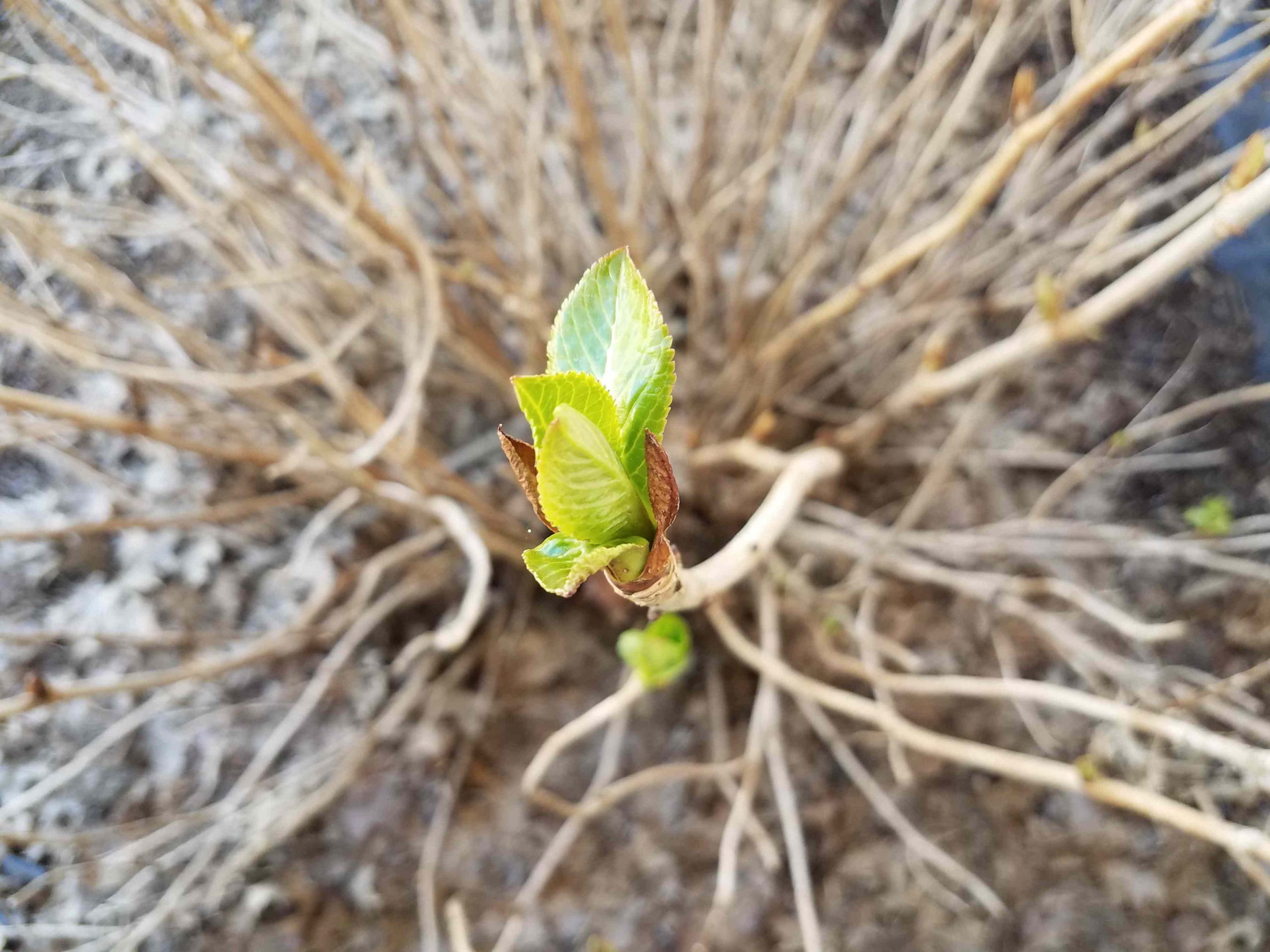Don’t give up hope.
Cultivating hydrangeas can be very fulfilling. When their enduring flowers grace the garden in summer, we are unable to resist enjoying the radiance. We appreciate alltypes of hydrangeas, from the large mophead flowers of bigleaf hydrangeas to the cone-shaped blossoms of oakleaf and panicle hydrangeas.
But most of us have experienced ahydrangea mishapor two, perhaps even placing a dead hydrangea on the compost heap. Don’t lose hope if you find yourself in this scenario. In many instances, anear-dead hydrangeaIf you take the correct actions and exercise some patience, they can recover. We have listed the most frequent issues that cause hydrangeas to die and the most effective ways to bring them back to life.
Winter Damage
Hydrangeas may experience aharsh winter. You may observe the damage in spring when very little green growth appears or when the plant becomes uneven and seems partially dead. At times, all the above-ground parts might look brown. Don’t get worried and discard your hydrangea. Allow the plant a few weeks in spring before deciding what is truly dead. Even if the stems have died, new growth often emerges at the base. Once you are sure which parts of the plant are dead, cut the stems just above the new growth. The dead sections will be brown, dry, and easily break like a twig.
If you have a hydrangea thatblooms on old woodor was destroyed to the ground, it might take another year before you see blossoms. However, be assured that the bush will gradually regrow provided it receives enough water and good soil.
Late Freezes
Mild springs can mislead hydrangeas, particularly if a late freeze occurs after a period of warm weather. The buds begin to open but then suffer from freezing temperatures. Leaves and buds that are damaged by frost will turn black and wither, often throughout the entire plant.
Once more, being patient will benefit you. Wait until new, green growth appears before you start pruning. If you wish, you can carefully remove heavily damaged leaves while keeping the stems intact so they can generate new buds. If the soil is dry, provide your hydrangeas with a thorough watering to assist them. You might notice fewer blooms this summer, but your hydrangea will still remain healthy and green.
Underwatering
If your hydrangea is so droopy it beginsdropping leaves, you might be wondering if your shrub is dying. Hydrangeas can be sensitive when they don’t receive enough water—especially in warm weather—but there’s a strong possibility you can bring them back to life. First, check the soil with your finger to confirm that the top inch or so is dry. Then give the plant a thorough watering, ensuring the water reaches the bottom of the root ball. Check the plant within an hour to see if it’s beginning to recover. If the leaves have improved by evening, you’ll know that lack of water was the issue.
If you have recently moved your hydrangea into the garden, you might need to do this every day or every other day during its initial weeks. If the plant had tightly packed roots in its container, try removing it from the soil, gently loosening the roots to allow water to reach them, and then planting it again.
Potted hydrangeas also require frequent watering. Mature hydrangeas in the garden mayneed wateringevery two days in dry, warm conditions.
Poor Drainage
Heavy clay and soggy soilcan suffocate the roots of hydrangeas and result inroot rot, ultimately leading to the death of your plant. Drooping leaves and stems are a common indication of overwatering or inadequate drainage, particularly if the plant stays wilted throughout the day regardless of how much water it receives. This is why it’s crucial to assess the soil moisture before watering hydrangeas. Additional symptoms may involve uniformly pale or yellow leaves, as well as soft, mushy stems, andvisible fungusat the bottom of the plant. You might notice brown, dead leaves similar to those found on a plant that hasn’t received enough water.
If you identify the issue early, decreasing water intake or elevating the plant slightly above the soil level by mounding soil around it could be beneficial. For a plant that is almost dead, you should remove it and check the roots to determine if any viable, white growth is still present. If healthy roots are found, cut away the soft, brown roots; trim the plant by one-third to minimize transplant shock; and then replant it in an area with improved drainage. An alternative method to rescue the plant is to start anew: select a robust stem and propagate it in a pot according to our guidelines.steps for propagating hydrangeas.
Sunburn
Most hydrangeas can’t take full sunin the South. The warmer your climate, the more shade they require during the afternoons. If not, the leaves might get burned at the edges, turn into a dry, light brown color, and ultimately fall off. The blossoms can also be damaged by intense sunlight. Boosting water supply and applying a layer of mulch could assist the plant in recovering in a cooler environment. If you have hot summers, think about moving the shrub to a shadier area that gets some morning sun.
Deer And Rabbit Damage
Deer possess an annoying tendency ofnibbling the flowersoff of hydrangeas. However, even more disappointing is when a deer or rabbit chooses to eat a young plant, resulting in just a short, leafless stem remaining in the ground. Don’t lose hope. Surround your plant with a protective barrier like hardware cloth or stakes and netting to stop them from feeding on it. Maintain slightly moist soil and your hydrangea should develop new leaves. After a few seasons, they will grow large enough that rabbits may no longer be interested. With deer, you might need to implement additional measures toprevent them from entering your garden.
Read the original article hereSouthern Living







